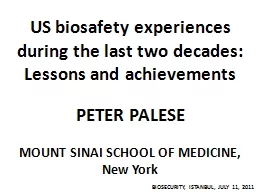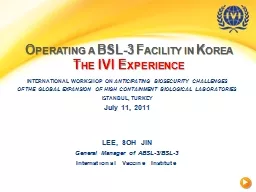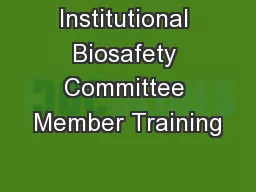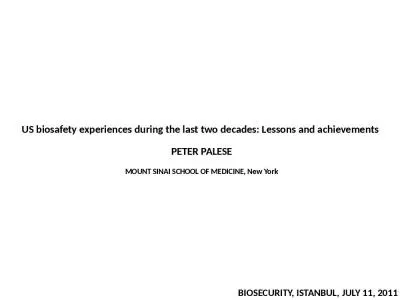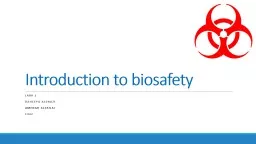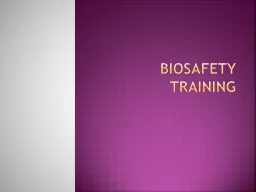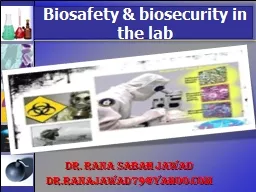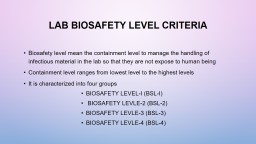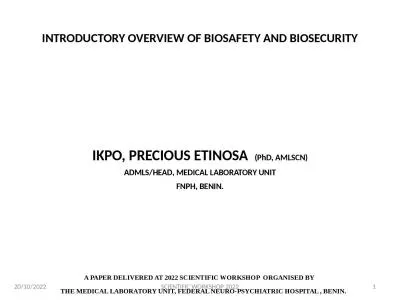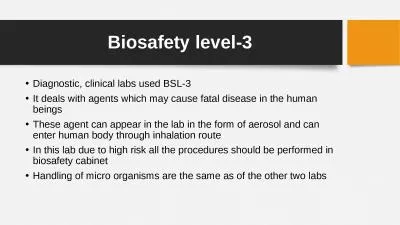PPT-US biosafety experiences during the last two decades: Lesso
Author : min-jolicoeur | Published Date : 2017-10-11
PETER PALESE MOUNT SINAI SCHOOL OF MEDICINE New York BIOSECURITY ISTANBUL JULY 11 2011 Biosafety in Microbiological and Biomedical Laboratories 5th Edition US Department
Presentation Embed Code
Download Presentation
Download Presentation The PPT/PDF document "US biosafety experiences during the last..." is the property of its rightful owner. Permission is granted to download and print the materials on this website for personal, non-commercial use only, and to display it on your personal computer provided you do not modify the materials and that you retain all copyright notices contained in the materials. By downloading content from our website, you accept the terms of this agreement.
US biosafety experiences during the last two decades: Lesso: Transcript
Download Rules Of Document
"US biosafety experiences during the last two decades: Lesso"The content belongs to its owner. You may download and print it for personal use, without modification, and keep all copyright notices. By downloading, you agree to these terms.
Related Documents

